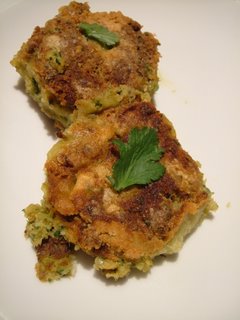
Chinese crispy belly pork, or siew yoke, is fabulous stuff, but it only stays crispy for a day or so. The day-two-wangy-crackling is, of course, also a problem with belly pork you’ve cooked in a western style, and this stir fry works really well with any leftover roast belly. You don’t need to strip the crackling off, but sadly, it will not be resurrected by any cooking method; it still tastes good, but if you’ve plenty of leftovers you might choose to remove it as I did here. Save any fat that renders out of the pork as you roast it to push the flavour of the pork in the stir fry up a notch.
Don’t keep your pot of tom yum paste (my favourite brand is Mae Ploy, which comes in a 400g tub you can keep for months in the fridge) just for tom yum soup. It makes a fantastic quick marinade for seafood, and works really well as a sauce ingredient. In this dish, it provides the spice and piquancy to make a great base for a sweet/sour style sauce, rather nicer than the mouth-puckering sort you’ll get at the local takeout because the sourness in the paste comes from lime and tamarind rather than white vinegar.
Rich pork and sweet peas work really well together. I’ve cooked this pork with sugary mange touts and sweet sugarsnap peas. If you can only get one kind of pea, substitute the other with frozen petits pois.
To serve 2-3 people, you’ll need:
500g leftover roast pork belly
200g mange tout peas
200g sugar snap peas
3 cloves garlic
10 spring onions, chopped
1 or 2 red chillies, to taste
1 tablespoon soft brown sugar
2 tablespoons tom yum paste
100ml Chinese rice wine
1 tablespoon light soy sauce
Juice of a lime
1 tablespoon rendered fat from the pork or flavourless oil to fry
Chop the pork into bite-sized pieces, and set aside. Chop the garlic finely and slice the spring onions and chillies.
Bring the pork fat or oil up to a high temperature in your wok, and throw in the garlic, chillies and spring onion with the sugar. Stir fry for about ten seconds, then add the pork to the pan with the tom yum paste, rice wine and soy sauce. Continue to stir fry for two minutes, then add the peas, pop a lid on the wok and leave to steam in the sauce for a couple of minutes while you put some rice out, until the peas are bright green and barely cooked.
Remove the stir fry to a warm serving dish, and add lime juice to taste. Serve immediately.


